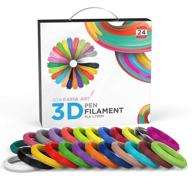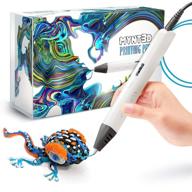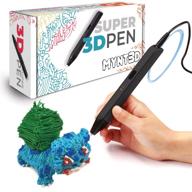
Review on Creality HALOT ONE 3D Filtering 127X80X160Mm by James Nedumaran

Resin has never looked so good under $2,000
Just for context, I had eight 3D printers: five filament and three resin printers. For the purposes of this review I will be comparing the Creality HALOT-ONE to two of my other resin printers, the Anycubic Photon (AC) and the Nova Elfin2 Mono (Nova). I mainly use my printers to make 28mm game miniatures, so I printed and photographed them. I used different resins for each of the prints because they were made at different times, but other than that I controlled as many variables as possible. TL;DR: Creality HALOT-ONE can apply thinner layers with fewer lines or light. artifacts than any of these similarly priced printers and produces far less noise when printing. Creality is a big name among filament printers, but I couldn't find much information on their consumer resin printers, so I went into this review mostly blind. Installation was pretty easy, but that's because I've done it before. The instructions in the manual were grossly inadequate, based on my experience with their filament printers. Creality seems to believe that anyone who buys a 3D printer is a DIY enthusiast, willing and eager to go beyond the materials that come with it to start a hobby. I also didn't get the "alignment card" that was supposed to be included, but that wasn't a big deal since it's literally a piece of paper. Speaking of alignment, the printer claims to come pre-aligned, but the instructions are ambiguous. whether or not to attempt alignment during initial setup. My rule of thumb is to level up early and often, which is what I did. And wow, Creality has mastered one button leveling! Do not move the build plate down 0.01mm at a time until you feel the required pressure on the side. Just loosen the screws, press the level button and wait. And wait. Because it's a Z-axis motor. slow. You don't have to move the screw up and down as often, which is good, but I wanted a fast-forward button. However, I also found that at first I didn't realize the Z-axis was moving at all because it was silent. The fan doesn't turn on until it's needed, so things like this are almost silent. Once the board was level I removed the resin bath to inspect it and the light source. The resin reservoir is machined from solid aluminum, which is usually a separately purchased upgrade for a printer in this price range. The FEP had some dents, but they were far enough on the outside that I figured I could still use the center for a test print. However, I need to replace it before I print more than one mini. They include a replacement FEP blade but a little more attention to packaging would have saved me from having to use it so soon. . It's a pretty basic slicer, so I'll probably use another program to do all my manipulation and maintenance, and just jump to that program for the actual slicing. Once ChiTuBox starts supporting this storage format, I'm pretty sure I'll never look at it again. One reason this might be a bare skeleton, however, is that a lot of the things you would normally set up in a slicer are on the printer itself. You can set the time for base shifts and normal print shifts, lifting speed, glow duration, etc. from the control panel. I'm not 100% sure what the benefit of this change is, other than that you can clean up a failed print and start messing around with the settings right away instead of going back to your computer. Not better or worse, just different than other printers/slicers I've used. However, once I started cutting the files, I noticed that the predicted print times were MUCH longer than I expected for such small models. Creality said it would take 4.5 hours to print 28mm plus raft while my Nova did it in 1.5 and my AC in less than 3. Poking around to see why, I saw that the layer height was surprisingly small - 0.01mm. . The Nova fluctuates between 0.03 and 0.05 and the AC doesn't go below 0.03 without messing around with the settings much, giving mixed results. So, judging by the number of layers, it was quite a quick print; he just had to do a lot more layers than other printers. Stated speeds almost certainly refer to 0.05 mm thick layers. I used the resin I had on hand as I wanted to test this printer under the same conditions as the others. As soon as the printer started up, the fan would spin up and that was the only noise the printer made the whole time. However, the fan is quite loud. I might see if I can find any modding communities that might get me to upgrade to a higher quality fan because it whines a bit when it gets up to speed. My first print failed, but judging by how it failed I recognized the pumping. Problem. It also led me to find another flaw with this printer: no way to pause the print and lift the platen to check how things are going. When you pause, your only options are to continue the task or stop it entirely. This means you will need to print for about 2 hours at a layer height of 0.01mm to be able to see enough build plate area to even know if your print has stuck. I hope this gets fixed soon as there is a significant cost in time due to the failed printing. Since the build plate was level, I checked the printer myself and noticed that my table was slightly off. The HALOT-ONE doesn't have adjustable feet, so I plugged it in and tried again. The result is a medium print which you can see in my photos (with Nova on the right and AC on the left). You can see that the AC print looks a little "hairy" due to the light leaking, which is causing the extra resin to stick to the parts. In comparison, the Nova print has distinct layer lines due to the layer height of 0.05mm. And here is the Creality print. just wow. I took some higher resolution photos than I can post here and sent them to a friend who also prints miniatures and he was just as impressed as I was. The level of detail in the cape's mustache-thin feathers is mind-blowing, and the lack of layer lines makes it look more like a die-cast mini than printed. A few other comments, in no particular order. :* The build plate is a standard size for this price range, but the capacity is larger, which means that when the plate is submerged, the resin doesn't splatter all over the place and can't slosh onto the wall of the bath plate and not on the lever because of the build up in that area Resin can collect and flow out when the plate is peeled off. This is fairly common; I believe my AC was the only printer I found that connects manually. The AC also has a steeper incline at the top, allowing more resin to drain while the Creality still piles up a bit at the top. It's kind of like my other Creality products that will be fast and bug free. * The USB port is on the front, which is a mistake. It's too easy to drip some resin onto the front of the printer when removing the plate, and when it seeps in there and hardens, say goodbye to that connector. * "Filter" is useless. It smelled like any other polymer printer. If you are concerned about the odor, get a low odor resin. Some modding communities also make grommet attachments that you can use to run hose from a fan to a window to release the smell. A pet can easily tip it over, so plan your printer setup accordingly. Most of them come with things like gloves, a microfiber cloth, tweezers, and sometimes even wire cutters for removing supports. It had everything you need to start the printer but nothing for what you need to do afterwards. Details. If you are willing to wait for it. It's missing a few features that other printers have even in this price range, some of which I hope will be addressed later. The quiet Z-axis motor is undermined by a loud, whining fan, but if you know how to work, you can upgrade it. If the results were as good as other resin printers I would give it 3 stars, but the quality of the end result justifies the full 5 stars.
- Everything is great!
- Expensive
New products
Comments (0)
Top products in 🖨️ 3D Printers

🖨️ IFUN 3D Printing Liquid Resin: High-Quality Innovative Solution

5 Review
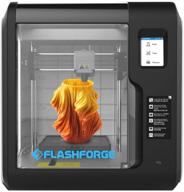
Flashforge Adventurer 3D Printer with Detachable Precision Leveling System

6 Review

High-Precision And Stable Creality Ender 3 V2 3D Printer With New UI, Silent Mainboard, Effortless Filament Feed-In, XY-Axis Tensioner, Resume Printing, And Large Build Volume Of 220×220×250Mm

11 Review
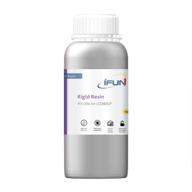
🔵 IFUN 3D Rapid Resin - Low Odor Photopolymer Resin for 405nm LCD 3D Printer - Fast Curing, Standard Rigid Formula - Sky Blue, 500g

5 Review


